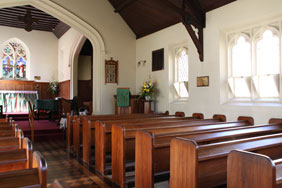Canon EOS 50D
-
-
Written by Gordon Laing
Canon EOS 50D vs Nikon D90 High ISO Noise
Canon EOS 50D results : Outdoor resolution / Studio resolution / 50D vs 40D Noise / 50D vs D90 Noise / Noise Reduction
Canon EOS 50D results continued…
Outdoor resolution / Studio resolution / 50D vs 40D Noise / 50D vs D90 Noise / Noise Reduction

|
 |
To compare noise levels under real-life conditions we shot this scene with the Canon EOS 50D and Nikon D90 within a few moments of each other using each of their ISO settings. We tested the 50D with the EF-S 18-200mm IS and the Nikon D90 with the Nikkor DX 18-105mm VR. The focal length of each lens was adjusted to deliver the same field of view and the aperture set to f8 for optimum sharpness. |
|
The 50D’s High ISO Noise Reduction was set to its default Standard, but the Auto Lighting Optimizer was Disabled for this test since it can artificially increase noise levels. Likewise, the D90’s Active D-Lighting was disabled for this test, although its High ISO NR was set to the default Normal. The image above was taken with the Canon EOS 50D at a sensitivity of 100 ISO, using the EF-S 18-200mm IS kit lens at 20mm f8; the original Large Fine JPEG file measured 4.18MB. The crops are taken from the centre and presented at 100%. The D90 crops show a larger area due to its lower resolution. Note these shots were taken on a different day to our 50D vs 40D noise results. Both cameras here deliver similar results between 100 and 800 ISO, starting with clean images and gradually exhibiting greater visible noise artefacts, although the D90’s output looks punchier due to its default image processing. At 1600 and 3200 ISO, both cameras unsurprisingly suffer from reduced quality, although the 50D’s samples look softer than the D90. This is mostly due to a different strategy in their default noise reduction processing, with Canon opting for smoother output at the cost of smearing. As you’ll see in our 50D Noise Reduction results page, the Low setting retains greater detail if you’re willing to accept some noise. 6400 ISO from both cameras isn’t particularly pretty, although at a push the D90’s default settings arguably deliver a slightly better-looking image. You’d only want to use 6400 ISO under emergency conditions on either camera though. The 50D’s 12800 ISO output again is a step too far with visible banding and hot pixels in addition to greater noise levels. So for the bulk of the ISO range we’d say the 50D and D90 are fairly well-matched, and since the D90’s output is so similar to the D300, it also gives a strong indication of how Nikon’s semi-pro rival would compare with the 50D. Once again though, remember the 50D’s higher pixel count means any artefacts will appear smaller when its images are reproduced at the same size as the D90. So once again a good result for the 50D which keeps noise levels under control (across a normal ISO range) despite its high pixel count. What we have seen on our High ISO comparisons though is greater noise reduction applied by the Canon by default at higher sensitivities. The 50D offers four different noise reduction settings though, so to see how they compare – and crucially if one is preferable to the default – see our Canon 50D Noise Reduction results page. Alternatively, you can see additional sample images section in our Canon 50D Gallery. |
Canon EOS 50D with Canon EF 18-200mm IS |
Nikon D90 with Nikkor DX 18-105mm VR | |
 |  | |
100 ISO |
L1.0 (100 ISO) | |
 |  | |
200 ISO |
200 ISO | |
 |  | |
400 ISO |
400 ISO | |
 |  | |
800 ISO |
800 ISO | |
 |  | |
1600 ISO |
1600 ISO | |
 |  | |
3200 ISO |
3200 ISO | |
 |  | |
H1 (6400 ISO) |
H1.0 (6400 ISO) | |
 |  | |
H2 (12800 ISO) |
12800 ISO not available |





